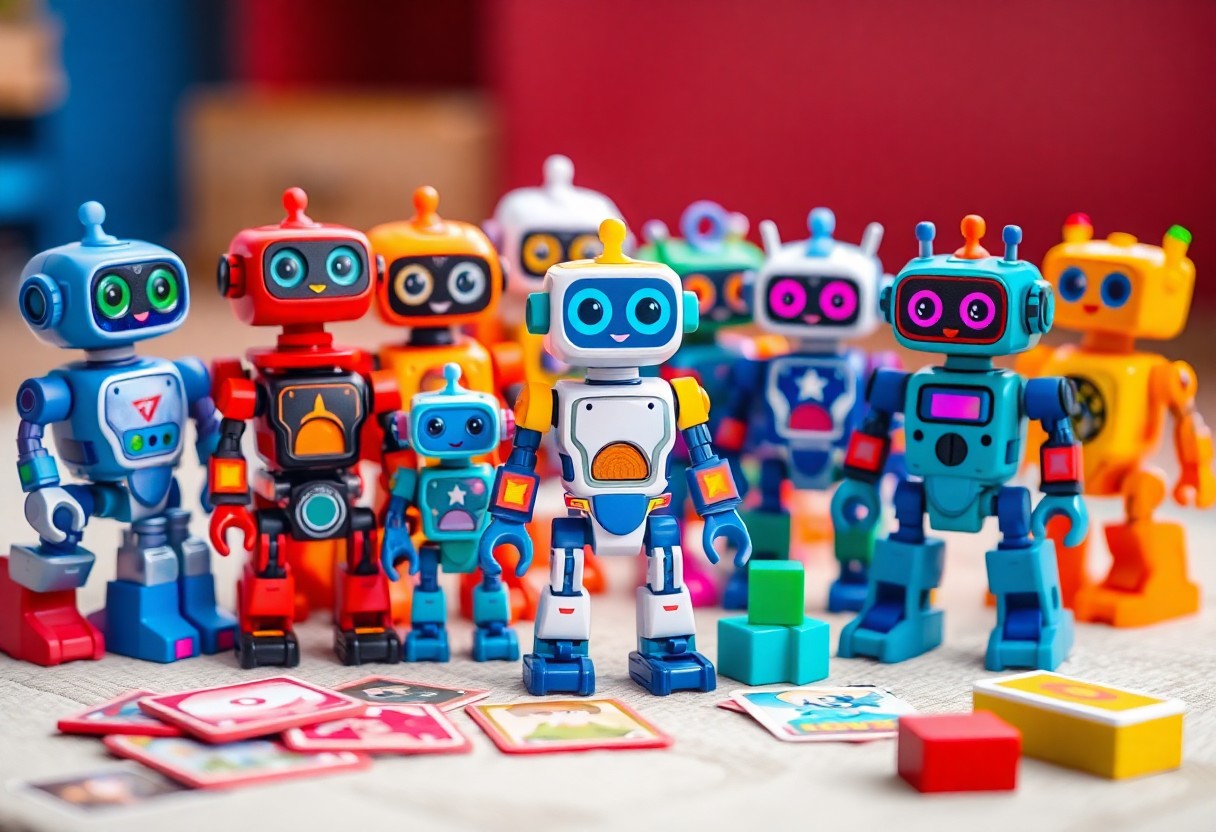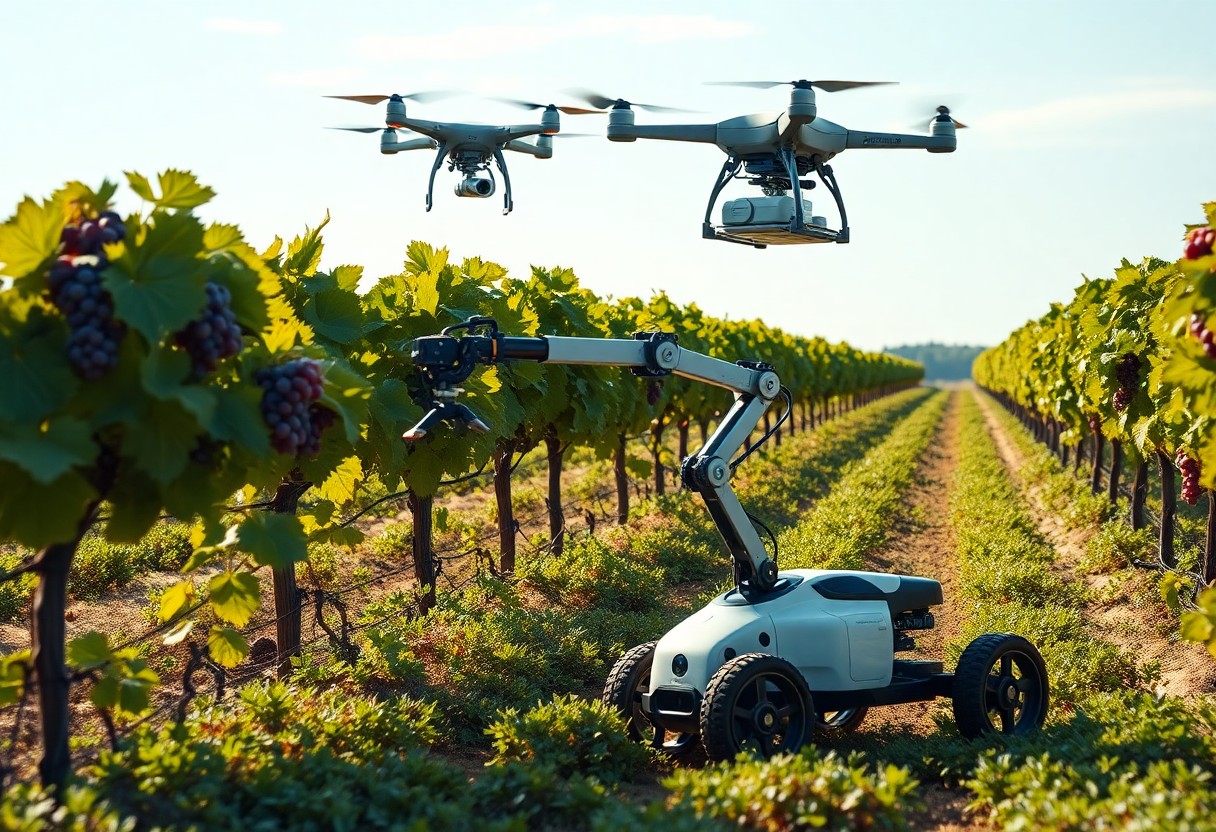You may be surprised to learn that swarm robotics is an emerging field that draws inspiration from social behaviors observed in nature, such as those seen in colonies of ants, bees, and other social insects. This fascinating domain enables robotic systems to operate collaboratively and efficiently, often outperforming individual robots. Understanding the underlying principles—such as decentralized control, communication protocols, and task allocation—will provide you a deeper insight into how these robots can solve complex problems in various applications, from environmental monitoring to disaster response. Dive in to explore the intricacies that frame this cutting-edge technology.
Foundations of Swarm Robotics
While the field of swarm robotics draws inspiration from the collective behavior observed in nature, it also benefits from a strong theoretical foundation. You will find that this area combines principles from computer science, biology, and engineering, resulting in multi-agent systems capable of performing complex tasks. Understanding these foundations is crucial for grasping how individual agents collaborate and adapt to their environment, ultimately achieving collective goals.
Principles of Collective Behavior
After examining the principles of collective behavior, you will discover that they often emulate biological systems, such as ant colonies or bird flocks. The underlying mechanics—communication, cooperation, and self-organization—allow individual agents to work together without centralized control. This decentralized approach fosters dynamic adaptability, enabling the swarm to respond effectively to changing conditions and tasks.
Key Algorithms and Technologies
Before delving into specific algorithms, it’s important to recognize the various technologies that underpin swarm robotics. These often include hardware platforms, sensor technologies, and communication protocols that facilitate interaction among agents. Understanding the interplay of these elements provides you with the context that enhances the effectiveness of swarm behaviors and algorithms.
Robotics algorithms play a pivotal role in orchestrating the actions of swarm agents. These algorithms, such as particle swarm optimization, flocking behaviors, and ant colony optimization, enable you to design systems that can efficiently explore environments, solve optimization problems, and achieve consensus. By leveraging advancements in artificial intelligence and machine learning, these key technologies empower your swarm robotics systems to adapt and evolve in real-time, enhancing their performance and reliability.
Communication Mechanisms
The field of swarm robotics heavily relies on efficient communication mechanisms to ensure that multiple robotic agents can work together cohesively. Robust communication enables real-time data exchange, coordination of tasks, and responsiveness to environmental changes. By understanding the different types of communication methods, you can better appreciate how these systems manage to operate collaboratively and adaptively in complex environments.
Decentralized Communication Protocols
After establishing a decentralized architecture, swarm robots utilize communication protocols designed to operate without a centralized control unit. This approach allows agents to share information directly with one another, facilitating autonomous decision-making based on local data. By embracing decentralization, you can recognize how each robot contributes to the overall objective, enhancing resilience and scalability in dynamic situations.
Interaction Models Among Agents
Behind the scenes, interaction models significantly shape how agents perceive one another and act in their environment. These models define the rules governing communication, coordination, and collaboration among robots, influencing everything from the sharing of sensor data to the execution of tasks. By focusing on these interaction frameworks, you gain insight into how swarm robotics can achieve complex behaviors through simple local interactions.
With interaction models defining the behaviors and communication strategies of each agent, you can see how they adapt based on their local environment and the actions of peers. These models not only facilitate effective collaboration but also allow for emergent behaviors to manifest—where the collective outcome transcends individual capabilities. Understanding these interaction dynamics provides a clearer picture of how robustness and efficiency arise from seemingly simple rules guiding each robot’s actions within a swarm.
Swarm Intelligence Applications
Any exploration into swarm intelligence unveils its vast potential across numerous fields. From environmental monitoring to logistics, the application of swarm robotics provides solutions that mirror the efficiency and adaptability found in natural swarms. As you research into this multi-faceted realm, you’ll uncover how collaborative behavior enhances productivity and leads to innovative problem-solving approaches in various sectors.
Real-World Use Cases
Intelligence in swarm robotics manifests itself through practical applications in diverse environments. For instance, agricultural drones equipped with swarm technology can efficiently monitor crop health and optimize resource usage. You will find that these implementations not only improve efficiency but also streamline processes in sectors ranging from disaster management to transportation.
Innovations in Various Industries
The integration of swarm intelligence has initiated transformative changes across different industries. As you explore these advancements, you’ll notice how businesses leverage swarming algorithms to enhance automation and decision-making. With numerous firms investing in this technology, it opens pathways to improve service delivery and efficiency.
Various industries are adopting swarm intelligence to revolutionize their operations. Robotics in healthcare allows swarming systems to assist in surgeries and patient monitoring, providing enhanced precision. In logistics, swarm algorithms optimize route planning, effectively reducing transportation costs. As you examine these innovations further, you’ll recognize a trend of increasing collaboration among machines, which serves to minimize human error and maximize output across various applications.
Challenges and Limitations
Keep in mind that swarm robotics, while promising, is fraught with challenges and limitations that can hinder its effectiveness. These hurdles include issues related to communication, energy consumption, and the complexities of collective decision-making. As you explore this field, you must be aware that addressing these challenges is vital for enhancing the functionality and reliability of swarm robotic systems.
Scalability Issues
Across swarm robotics, scalability is a significant concern. As you scale up the number of robots in a swarm, managing their interactions becomes increasingly complex. This requires careful consideration of the algorithms used for communication and coordination, as inefficient methods may lead to congestion and decreased performance. Ensuring that your swarm can function efficiently when enlarged is vital for real-world applications.
Environmental Factors and Constraints
Among the various factors affecting swarm robotics, environmental conditions play a pivotal role. Your robotic swarm must be designed to adapt to different terrains, weather patterns, and obstacles. Consider the following aspects that could impact your swarm’s performance:
- Terrain variability, such as rough or uneven surfaces
- Weather conditions, including rain, wind, or extreme temperatures
- Obstacles that may impede movement or signal transmission
- Resource availability, crucial for energy and task completion
Perceiving and responding to these environmental factors is necessary for the successful deployment of swarm robotics in practical scenarios.
And as you research deeper into environmental factors, your understanding of their implications will expand. Each element can significantly influence the efficacy of swarm behaviors and cooperative tasks. Be sure to consider how your swarm design can be resilient to variations and constraints in its surroundings, including:
- Communication disruptions in dense or obstructed environments
- Battery life and energy management under different atmospheric conditions
- Sensor limitations that may hinder environmental monitoring
- Interference from other agents or robots in the vicinity
Perceiving these challenges enables you to design more robust and adaptable swarm robotic systems.
Future Directions in Swarm Robotics
Not only does swarm robotics hold immense potential for various applications, but it also continues to evolve with exciting advancements on the horizon. You can expect significant strides in areas like autonomous navigation and multi-agent cooperation, leading to more sophisticated systems. The integration of novel technologies will enhance swarm capabilities, paving the way for innovative solutions to complex challenges in fields such as disaster response and environmental monitoring.
Emerging Trends
Before entering into the future of swarm robotics, it is crucial to highlight the emerging trends shaping this field. You may notice a growing interest in bio-inspired algorithms, which aim to replicate natural swarm behaviors for improved efficiency. Additionally, partnerships between academia and industry are fostering research that accelerates the development of practical applications, further enhancing your understanding of swarm dynamics.
Potential for Integration with AI
An integral aspect of the future of swarm robotics is its potential for integration with artificial intelligence. You should consider how AI can enhance decision-making processes within swarms, enabling more adaptive and intelligent behaviors. As AI technology continues to advance, the synergy between these fields will likely open up new avenues for research and application.
Even as swarm robotics matures, the incorporation of AI will revolutionize the way these systems operate. This fusion allows swarms to learn from their environments, adjust their actions based on real-time data, and collaborate more effectively to achieve collective goals. By leveraging machine learning and data analytics, you can expect swarms to evolve into more autonomous units, capable of tackling complex tasks that were once thought impossible, transforming industries and improving overall operational efficiency.
Ethical Considerations
All advancements in swarm robotics raise ethical questions that you must grapple with, particularly concerning the impact on human interaction and accountability. As these technologies become more integrated into society, understanding the moral implications of their use, including privacy concerns and the potential for misuse, is imperative for any responsible practitioner in the field.
Societal Implications
Considerations surrounding swarm robotics inevitably extend to their societal effects. You should think about how widespread deployment could influence employment, social norms, and even security. Each application could alter relationships between people and machines, underscoring the necessity of careful thought and dialogue before implementation.
Governance and Regulation
Before you probe the world of swarm robotics, it’s vital to consider the critical frameworks for governance and regulation. As innovations in this field develop, appropriate rules must be established to ensure safety, accountability, and ethical usage.
In fact, you will find that ongoing discussions around governance are vital to shape the legal landscape of swarm robotics. Key stakeholders, including policymakers, engineers, and ethicists, should collaborate to create robust guidelines that address varying challenges. Striking the right balance between innovation and regulation will make it easier for you to navigate future developments while safeguarding public interests and ethical considerations.
Summing up
Following this exploration of swarm robotics, you can appreciate that the field encompasses complex algorithms, communication strategies, and local interactions among agents. Understanding these intricacies allows you to grasp how collective behaviors emerge from simple rules, enhancing your insight into applications ranging from environmental monitoring to search and rescue missions. As you explore deeper, you will discover the potential for innovation and the challenges that lie ahead, shaping the future of autonomous systems in dynamic environments.






